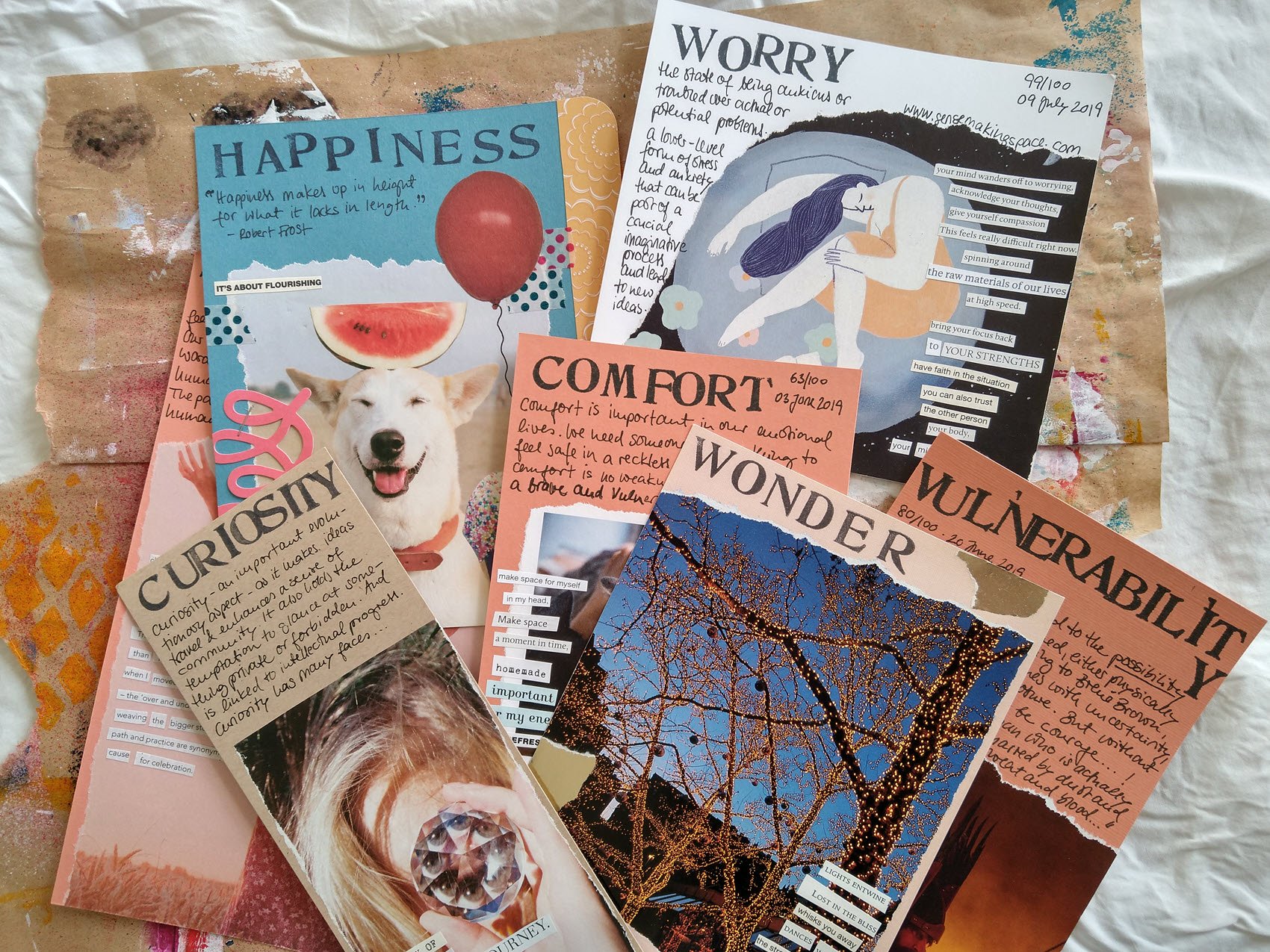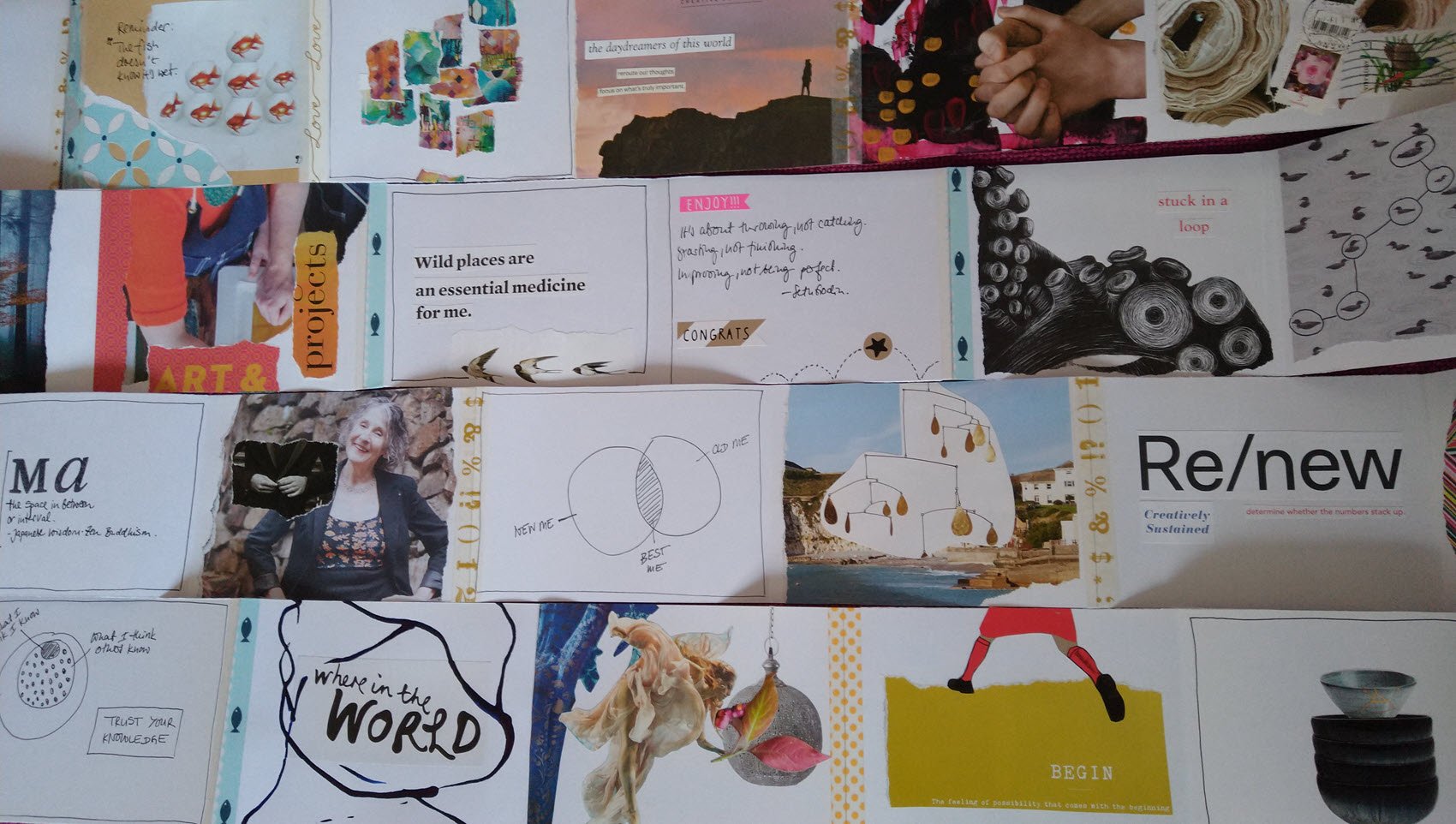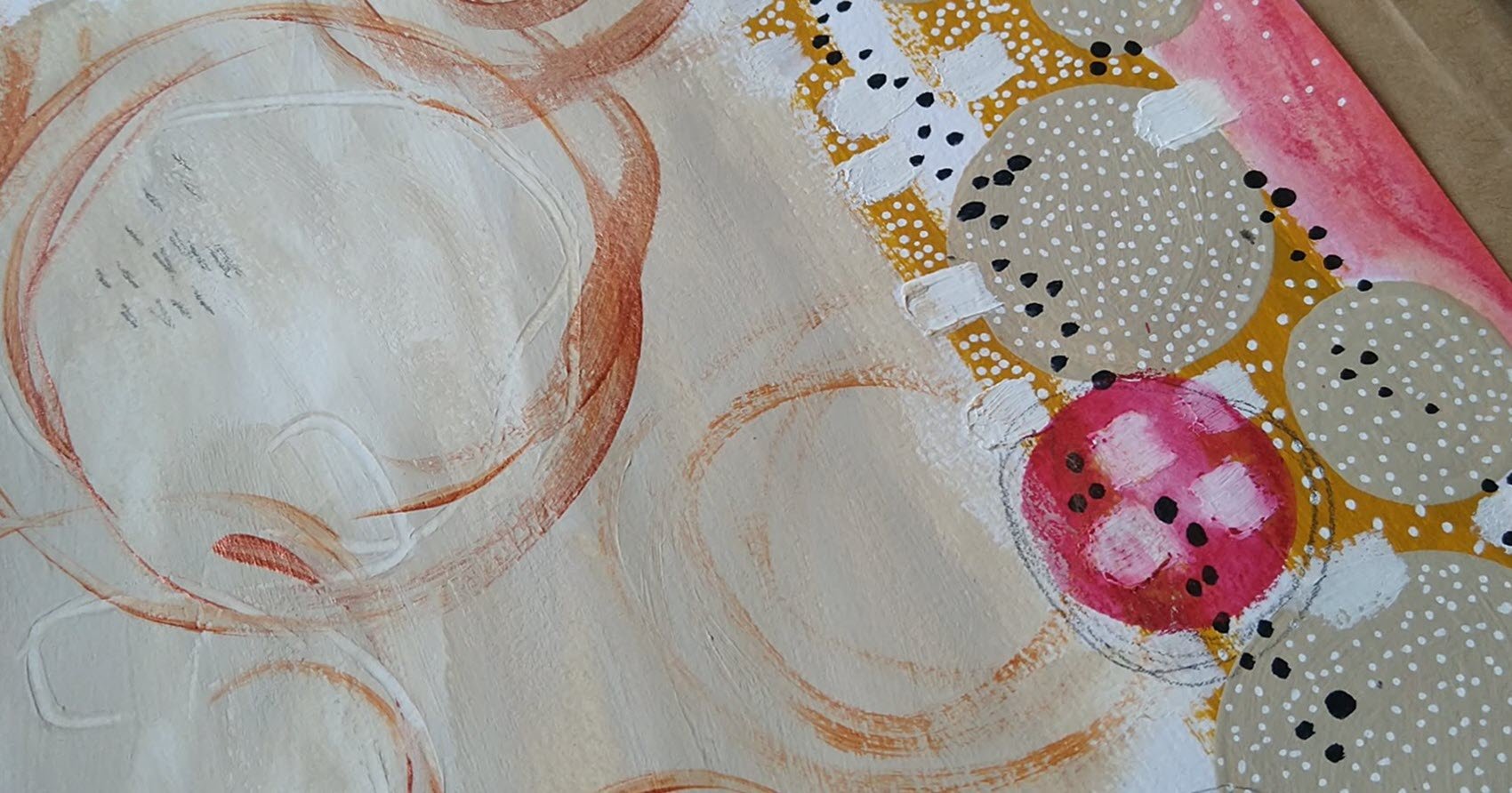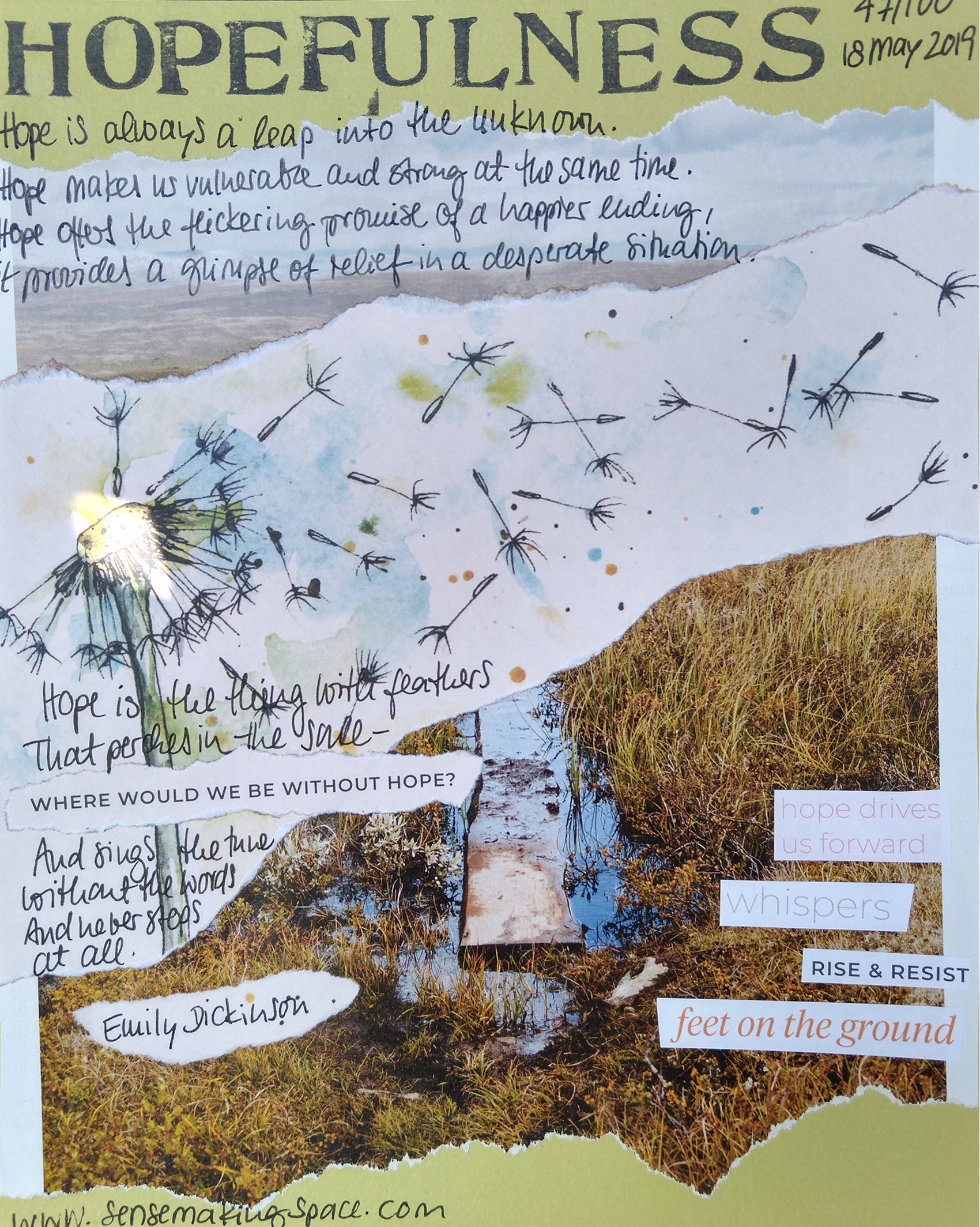100 days: an invitation to dance between Inspiration and Reality
If you have been around my work for a while, you might know that I enjoy engaging with the 100 Day Project, aka #the100dayproject.
In short, #the100dayproject is a free, global art project, based on a simple idea: “choose a creative project, do it every day for 100 days, and share your process online.”
The originator of this project is Michael Bierut, who taught a workshop for graduate graphic design students at the Yale School of Art. It was brought into the world of Instagram by Ella Luna in 2014.
So far, I’ve started and to varying degrees completed these projects:
100 days of emotions in 2019;
100 days of responding randomly in 2021;
100 days of making marks in 2022;
In 2023, I experimented with having a more specific outcome in mind; I experimented with ways of how to keep going on a big piece of work that needed time and ongoing dedication. I called this project 100 days of chipping away.
I’ve always understood Bierut’s brief as a learning opportunity for anyone seeking to develop a practice.
It could be a creative practice, a writing practice, a meaning practice, a health-related practice, or reflective practice... It doesn’t really matter which modality or intention someone chooses and whether the practice is related to work or life more broadly.
The repetitive element of doing the same thing for 100 days forces us to confront boredom.
My exploration of boredom as part of my 2019 project, 100 days of emotions.
Repetition also forces us to imagine new ways of doing the creative act we’ve committed to.
It is a way of exploring our relationship with routine and discipline and whether this feels like a supportive scaffolding or a suffocating straitjacket.
It also trains us in showing up when we feel we’ve definitely run out of ideas, are distracted by day-to-day life or tempted by the next shiny thing.
Bierut explains that his 100-day idea stems from his “fascination with the ways that creative people balance inspiration and discipline in their working lives.”
The balance between inspiration and discipline reminds me of the tension between inspiration and reality which plays a key role in how we create and maintain meaning in our work and lives.
The Map of Meaning®, a research-based framework developed by Prof Marjolein Lips-Wiersma, helps us understand the sources of meaning in the context of any work, not limited to creative professions, white-collar jobs or office-based work. The research has shown that navigating the tension between inspiration and reality in work is crucial for anyone.
Finding balance between inspiration and reality isn’t about the perfect equilibrium; it’s about being nimble and dancing between these two aspects of life.
It’s about staying inspired and hopeful in the face of life as it happens, in our own intimate world as well as in the global world. And we all know that that’s not easy. It can feel draining and overwhelming. Returning to hope instead of numbing our pain or confusion is hard.
My exploration of hopefulness as part of my 2019 project, 100 days of emotions.
Finding balance between inspiration and reality is also about accessing enthusiasm and energy without losing sight of the context within which we want to realise our ideas. Ideas without achievement or accomplishment remain stuck in cloud cuckoo land. We work in an ivory tower detached from real life and therefore detached from what matters to people. Or we get tangled in the energetic frenzy of a great idea and let this energy propel us forward without considering how our idea will contribute to others or the world.
As Bierut says in his reflection: “It's easy to be energized when you're in the grip of a big idea. But what do you do when you don't have anything to work with? Just stay in bed?”
Over the years of working with the Map of Meaning®, I’ve learned that one way people express the absence or loss of meaning is to ask: Why bother? What’s the point? What makes getting up and showing up worthwhile, at work or for any other endeavour? Especially when the reality seems overwhelmingly difficult, draining or almost too complex to comprehend.
I see the 100 Day project as a low stakes training opportunity to practice and experience the (im)balance between inspiration and reality, or inspiration and discipline.
If the word discipline is an uncomfortable one for you, too close to routine or schedule and something that seems to get in the way of spontaneity, independence, or choice, maybe reality is an easier access? Because we really can’t escape it.
Alternatively, I offer you some words by writer Annie Dillard, who found such poetic words to describe the benefits and power of a schedule that it could gently shift your relationship with the idea of routine:
“How we spend our days is, of course, how we spend our lives. What we do with this hour, and that one, is what we are doing. A schedule defends from chaos and whim. It is a net for catching days. It is a scaffolding on which a worker can stand and labor with both hands at sections of time. A schedule is a mock-up of reason and order—willed, faked, and so brought into being; it is a peace and a haven set into the wreck of time; it is a lifeboat on which you find yourself, decades later, still living.”
If the 100 Day project sounds too much like work or productivity for you… I keep wondering whether 2024 should see me shift into the 100 Day Invitation.
Shifting from project to invitation might seem subtle. There’s certainly more action in the word project; it’s more about doing, maybe more about progress or accomplishing something…
And a quick online search suggested that the word invitation comes from qualities of ‘being pleasant toward’.
Maybe with everything that’s going on in the world, I feel drawn to shifting my next 100 days toward a more spacious and open invitation.
It’s an invitation to explore my practice and get clear on what helps me show up steadily, not without wobbles, but with unwavering dedication.




